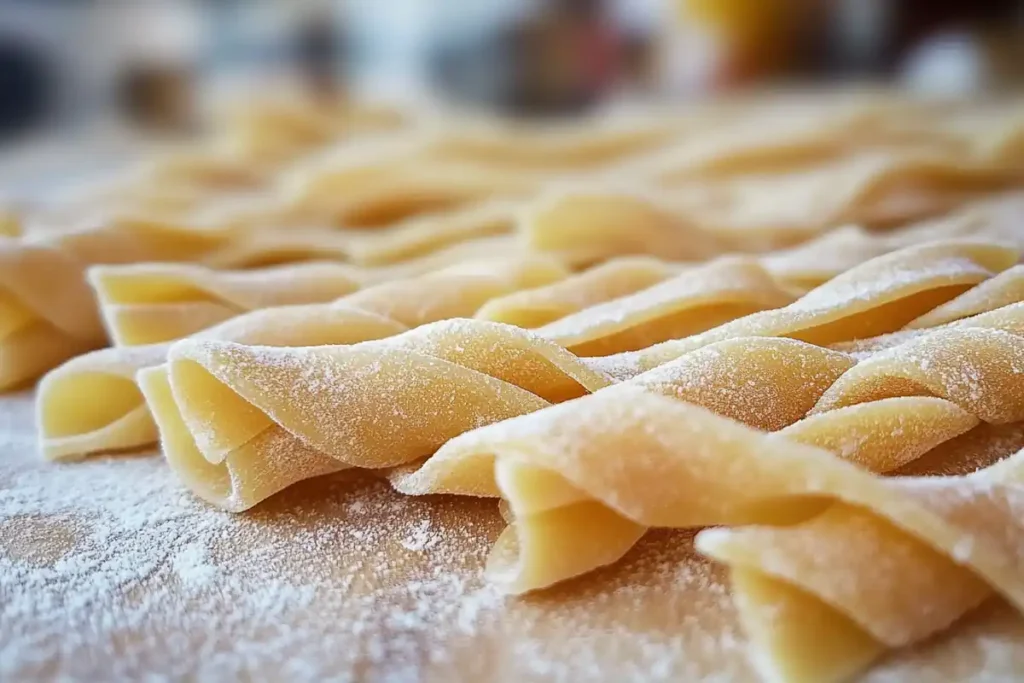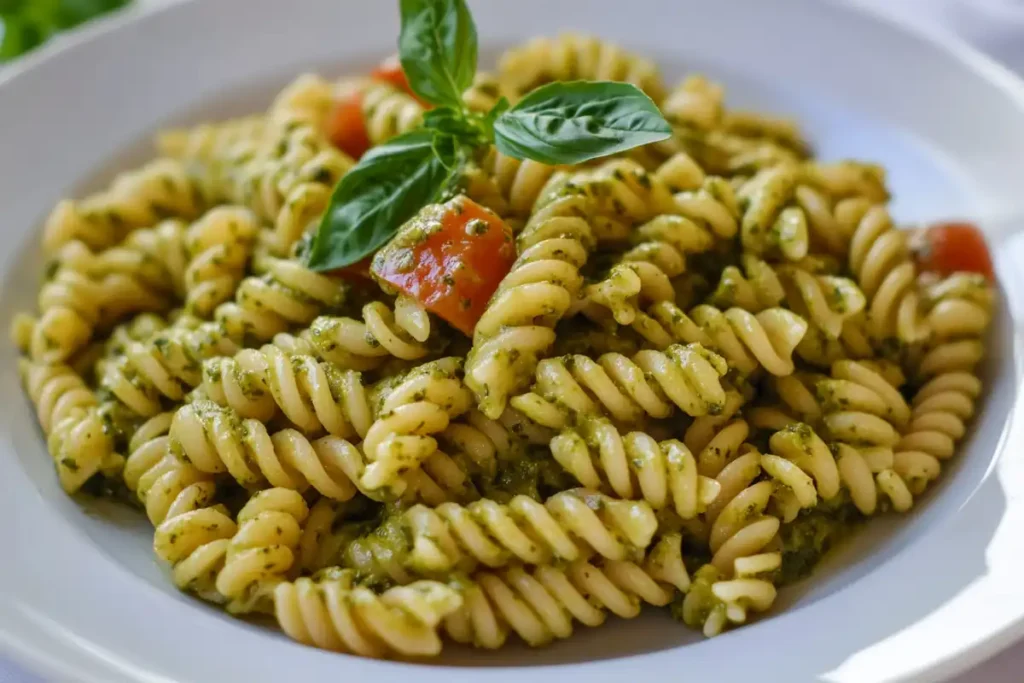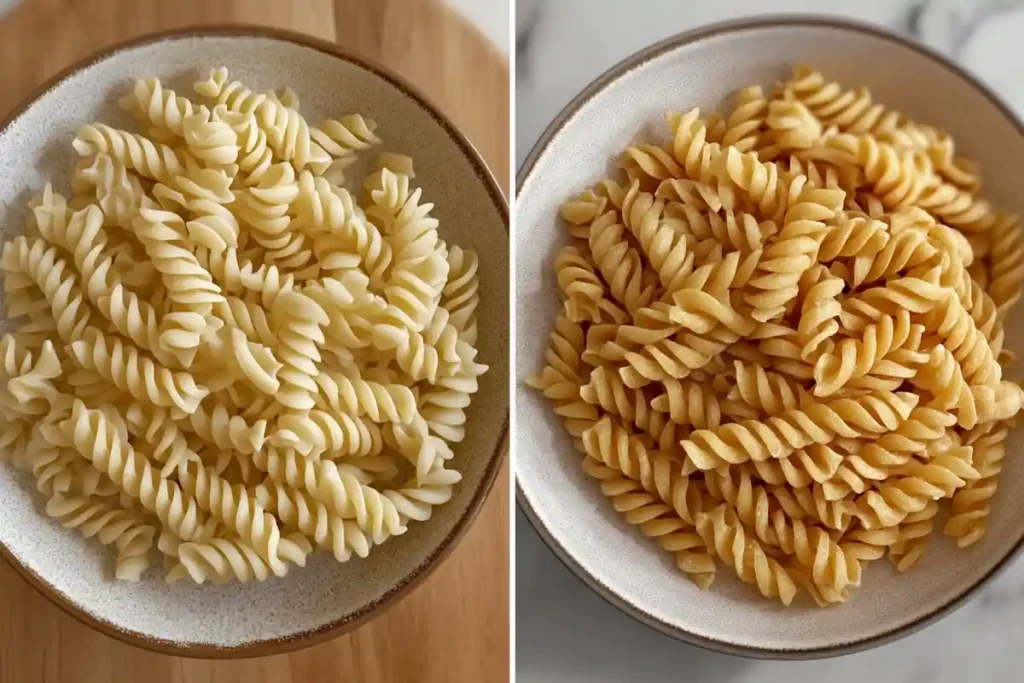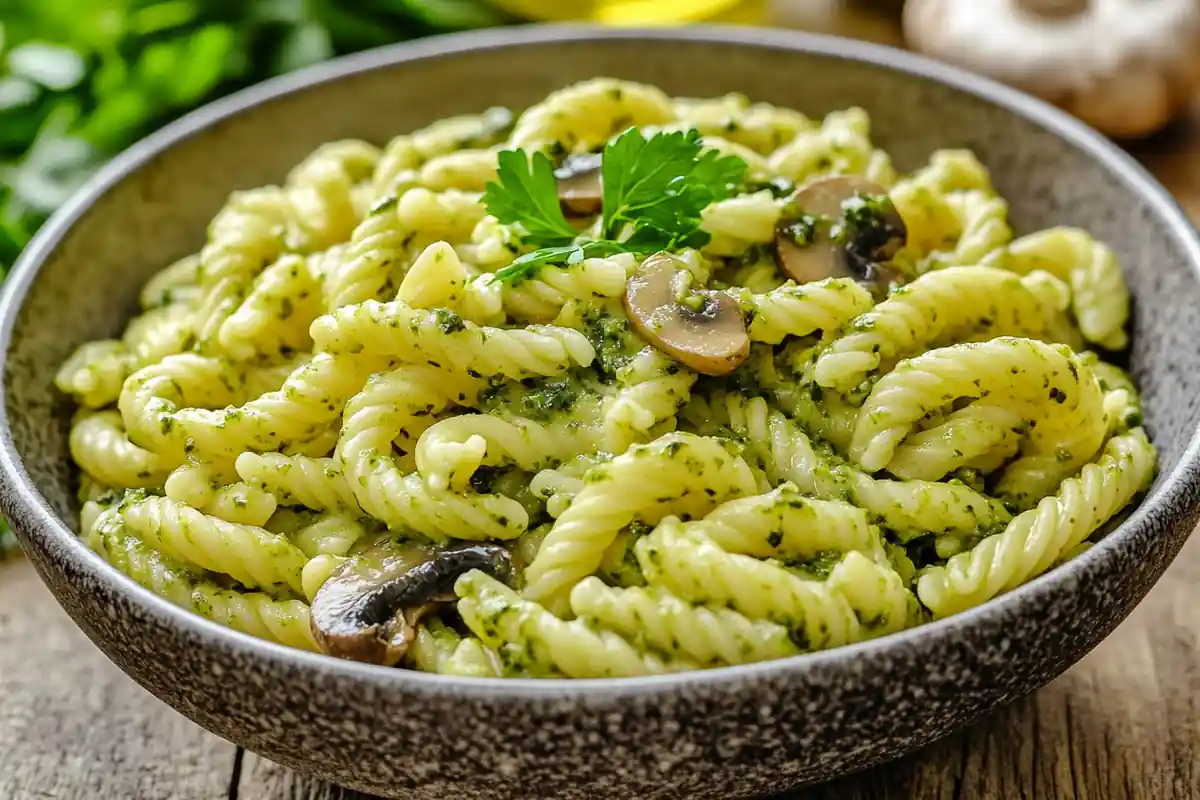Gemelli pasta is a delightful and versatile type of Italian pasta known for its distinctive twisted shape. It brings a unique texture to many dishes, enhancing your cooking with a rustic flair. But what is another name for gemelli pasta, and what makes it special? Let’s dive deep into the world of gemelli, exploring its origins, its counterparts, and its various uses in cooking.
Understanding Gemelli Pasta

Name Gemelli is a type of short pasta that closely resembles two pieces of pasta twisted around each other. In reality, gemelli—meaning “twins” in Italian—is made from a single strand of pasta twisted to form a spiral. Its name reflects its appearance, as it seems like two twin strands interwoven. This twisted shape helps the pasta hold sauces well, making it a popular choice for rich, hearty dishes.
The Spruce Eats offers an excellent overview of different pasta types, showcasing how gemelli’s structure compares to others in the Italian cuisine family. Additionally,
When you think of gemelli, you may be wondering if it has another name or similar counterparts in the pasta world. It’s crucial to explore these variations, especially when substituting ingredients or understanding regional differences. Let’s examine that in detail.
What is Another Name for Gemelli Pasta?
While gemelli pasta doesn’t have a direct alternative name, it is often compared with or mistaken for other twisted pasta types. Due to its spiral nature, people may confuse it with fusilli or cavatappi. These types of pasta share similarities, but each brings a different texture to your dishes. Below, we’ll discuss gemelli and its most similar pasta relatives.
Pasta Types Similar to Gemelli
- Fusilli: Fusilli is a commonly confused cousin of gemelli. While both have a spiral shape, fusilli is made with a corkscrew-like twist, and it often holds even thicker sauces. Unlike gemelli, fusilli consists of a single piece of pasta twisted into spirals. If you need a substitute for gemelli pasta, fusilli is one of the closest choices due to its comparable ability to hold sauces.
- Cavatappi: Cavatappi is a larger, corkscrew-shaped pasta that’s slightly different from gemelli but works well in a similar way. Its hollow spiral allows it to trap chunky sauces, making it perfect for robust dishes.
- Rotini: Rotini can also work as a stand-in for gemelli pasta. While the two are different in their twist structure—rotini being tighter—they both carry a similar sauce-holding quality. It is important to note that rotini is a bit denser compared to gemelli, which may slightly alter the texture of the dish.
Gemelli and its Name Meaning
In Italian, gemelli translates to “twins.” It is named so because the shape resembles two strands twisted together like twins embracing. Despite its name, the shape is actually created from a single strand of pasta. This symbolism of unity makes it a preferred pasta type in dishes served during family gatherings and celebrations.
You can explore more about pasta names and their meanings through resources such as MasterClass. This provides greater insight into how Italian culture is often reflected through food and its nomenclature.
Why is Gemelli Popular in Cooking?

The twisted design of gemelli makes it ideal for holding onto sauces, both thick and creamy. Its versatility allows it to be used in a variety of dishes—from classic Italian pasta salads to baked casseroles and beyond. Some reasons why gemelli is a favorite among chefs include:
- Sauce Absorption: Gemelli’s unique twisted shape helps it cling to both thick and thin sauces, ensuring a flavorful bite every time.
- Texture: The twists in gemelli provide an enjoyable texture, creating a perfect balance of tenderness and chewiness.
- Visual Appeal: The elegant twisted look of gemelli adds a visually appealing element to any dish, enhancing the overall presentation.
Cooking with Gemelli Pasta
Common Dishes Using Gemelli
Gemelli pasta is widely used in a variety of classic Italian dishes and creative new recipes. Below are some popular recipes featuring gemelli:
- Gemelli with Pesto: The classic combination of basil pesto and gemelli is one that showcases how well this pasta holds sauce, offering every bite with a burst of basil, garlic, and pine nuts.
- Creamy Gemelli with Mushroom Sauce: This dish features creamy white sauce infused with earthy mushrooms, and the twisted nature of gemelli ensures each piece is coated to perfection.
- Baked Gemelli Casserole: Similar to baked ziti, a baked gemelli dish combines marinara sauce, cheese, and ground meat for a comforting and hearty dinner.
Tips for Cooking Gemelli Perfectly
- Boiling Time: Cook gemelli pasta in salted boiling water for approximately 10-12 minutes or until al dente. This will give it the ideal texture—soft yet slightly firm in the center.
- Salt the Water: Ensure the cooking water is adequately salted. This will add flavor to the pasta itself, which is particularly important for simple dishes.
- Do Not Overcook: Avoid overcooking gemelli as it can lose its delightful chewy texture. The twists also tend to lose definition if cooked for too long.
Is Gemelli the Same as Fusilli?

One question often asked is, “Is gemelli the same as fusilli?” While they share some visual similarities, they are not the same. As previously mentioned, fusilli is a corkscrew-shaped pasta, whereas gemelli consists of a single strand twisted into what appears to be twin spirals. Each has its own unique properties, particularly when it comes to texture and how they hold sauces.
Fusilli tends to work better with thicker sauces, while gemelli is well-suited for lighter, creamy sauces. However, they can be used interchangeably in many recipes if one type is unavailable, keeping in mind the slight variations in texture.
The Cultural Significance of Gemelli Pasta
Pasta is more than just a meal; it is an integral part of Italian culture, and gemelli pasta carries a deep cultural significance. Italian cuisine emphasizes the importance of family and tradition, and pasta plays a central role in that expression. Gemelli, with its symbolism of twins or unity, makes it a popular choice for festive meals, family gatherings, and special occasions. The connection between the pasta shape and the concept of togetherness makes it perfect for sharing.
Regional Variations
While gemelli is commonly known across Italy, there are regional variations and adaptations that make each version slightly unique. In the Ligurian region, for example, gemelli is often paired with fresh pesto made from local basil, pine nuts, and Pecorino cheese. This iconic dish—Gemelli al Pesto—highlights how regional ingredients influence the pairing of pasta and sauces.
In Southern Italy, you might find gemelli paired with spicy marinara sauces that use locally grown chili peppers. These sauces add a bit of heat to the dish, emphasizing the region’s love for bold flavors. The versatility of gemelli allows it to take on the characteristics of the region where it is prepared, making it a true representation of Italy’s diverse culinary landscape.
Health Benefits of Gemelli Pasta
Gemelli pasta, like most traditional Italian pastas, is made from durum wheat semolina, which is known for its high protein and gluten content. This makes it a good source of complex carbohydrates, providing energy and keeping you full for longer periods. Here are some health benefits of gemelli pasta:
- Energy Source: The complex carbohydrates in gemelli pasta are an excellent source of energy, ideal for maintaining stamina throughout the day.
- Low Fat Content: Gemelli pasta is naturally low in fat, making it a suitable option for those who want to maintain a balanced diet without excessive fat intake.
- Versatility with Vegetables: Gemelli pairs well with a variety of vegetables, allowing you to create nutrient-rich dishes that are high in fiber, vitamins, and minerals. Pairing gemelli with vegetables like bell peppers, spinach, or broccoli enhances the nutritional value of the meal.
Additionally, whole wheat gemelli is a healthier alternative for those who prefer more fiber in their diet. It provides greater satiety and helps in regulating blood sugar levels, making it a good option for those managing their carbohydrate intake.
Delicious Gemelli Pasta Recipes to Try
Gemelli with Sundried Tomatoes and Spinach
This recipe combines the unique twist of gemelli pasta name with the rich flavor of sundried tomatoes and the freshness of spinach.
Ingredients:
- 12 oz gemelli pasta
- 2 cups fresh spinach leaves
- 1 cup sundried tomatoes (in oil, drained and chopped)
- 3 cloves garlic (minced)
- 1/4 cup olive oil
- Salt and pepper to taste
- 1/2 cup grated Parmesan cheese
Directions:
- Cook the gemelli pasta in salted boiling water until al dente, approximately 10-12 minutes.
- While the pasta is cooking, heat the olive oil in a large skillet over medium heat. Add the minced garlic and cook until fragrant, about 1 minute.
- Add the chopped sundried tomatoes to the skillet and cook for another 2-3 minutes.
- Stir in the fresh spinach and cook until wilted.
- Drain the pasta, reserving 1/2 cup of pasta water. Add the gemelli to the skillet and toss to combine with the spinach and sundried tomatoes.
- If the mixture is too dry, add some reserved pasta water until the desired consistency is achieved.
- Season with salt and pepper, and top with grated Parmesan cheese before serving.
Lemon Garlic Gemelli with Shrimp
This light and refreshing dish combines the brightness of lemon with the savory taste of garlic shrimp.
Ingredients:
- 12 oz gemelli pasta
- 1 lb shrimp (peeled and deveined)
- 4 cloves garlic (minced)
- Juice and zest of 1 lemon
- 1/4 cup olive oil
- Salt and pepper to taste
- 1/4 cup fresh parsley (chopped)
Directions:
- Cook gemelli pasta in salted boiling water until al dente.
- In a large skillet, heat the olive oil over medium heat. Add the garlic and cook until fragrant.
- Add the shrimp to the skillet and cook until pink and opaque, about 2-3 minutes per side.
- Add the lemon juice and zest to the skillet and stir to combine.
- Drain the pasta and add it to the skillet, tossing to coat in the lemon garlic sauce.
- Season with salt and pepper, and garnish with chopped parsley before serving.
Gemelli Pasta Salad with Cherry Tomatoes and Mozzarella
This pasta salad is perfect for picnics and potlucks, combining the fresh taste of cherry tomatoes with creamy mozzarella.
Ingredients:
- 12 oz gemelli pasta
- 2 cups cherry tomatoes (halved)
- 1 cup mozzarella balls (bocconcini)
- 1/4 cup fresh basil leaves (chopped)
- 1/4 cup olive oil
- 2 tbsp balsamic vinegar
- Salt and pepper to taste
Directions:
- Cook the gemelli pasta in salted boiling water until al dente. Drain and let it cool.
- In a large bowl, combine the cherry tomatoes, mozzarella balls, and chopped basil.
- In a small bowl, whisk together the olive oil and balsamic vinegar. Season with salt and pepper.
- Add the cooled gemelli pasta to the bowl with the tomatoes and mozzarella. Pour the dressing over the pasta and toss to combine.
- Serve immediately or chill for an hour before serving for a refreshing pasta salad.
Creative Ways to Use Gemelli Pasta
Gemelli Pasta Bake
A pasta bake is always a crowd-pleaser, and gemelli’s twisted shape makes it perfect for absorbing the rich flavors of marinara sauce and melted cheese. To make a gemelli pasta bake, simply prepare a marinara sauce with ground meat, mix it with cooked gemelli pasta, and top with mozzarella and Parmesan cheese. Bake in the oven until bubbly and golden. This dish is ideal for family dinners and can be made ahead of time for convenience.
Gemelli with Creamy Alfredo Sauce
Gemelli pasta pairs wonderfully with Alfredo sauce due to its ability to hold onto the creamy texture. Prepare a simple Alfredo sauce with butter, heavy cream, and Parmesan cheese, then toss it with cooked gemelli. Add some grilled chicken or steamed broccoli for added protein and nutrients. This comforting dish is easy to make and perfect for a weeknight dinner.
Frequently Asked Questions (FAQs)
What is Similar to Gemelli Pasta?
Similar pasta types to name gemelli pasta include fusilli, cavatappi, and rotini. All of these pasta shapes have twists or curls that allow them to hold onto sauces effectively. When substituting gemelli, fusilli is often the closest option due to its similar ability to carry flavors.
What is the English Translation of Gemelli Pasta?
The term gemelli in English translates to “twins.” This name reflects the pasta’s appearance, as it looks like two identical strands twisted together. However, it is made from a single strand of dough that is twisted to create a double-helix effect.
Why is it Called Gemelli?
Gemelli means “twins” in Italian, named for its shape that looks like two intertwined strands. Despite its appearance, it is actually a single piece of dough twisted into this shape, symbolizing unity and togetherness.
Is Gemelli the Same as Fusilli?
No, gemelli and fusilli are not the same. Although both have spiral shapes, fusilli is a corkscrew-like pasta, while gemelli looks like two twisted strands. Fusilli is better suited for holding chunkier, thicker sauces, while gemelli works well with creamy or lighter sauces.

